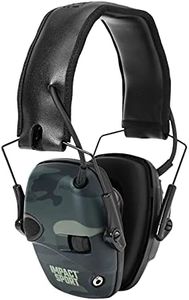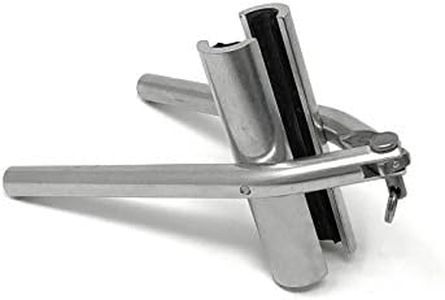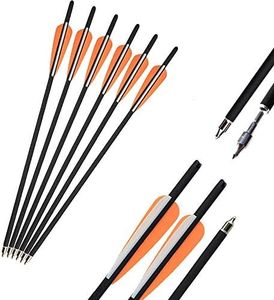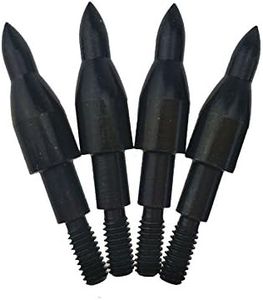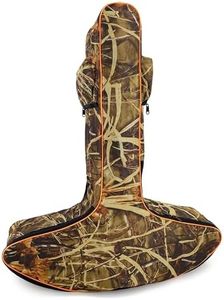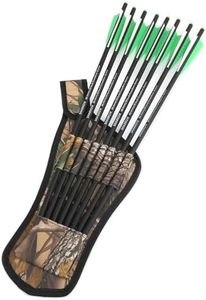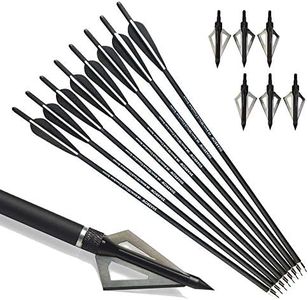We Use CookiesWe use cookies to enhance the security, performance,
functionality and for analytical and promotional activities. By continuing to browse this site you
are agreeing to our privacy policy
10 Best Hunting Crossbows
From leading brands and best sellers available on the web.Buying Guide for the Best Hunting Crossbows
When choosing a hunting crossbow, it's important to match your choice with your own physical ability, hunting environment, and the type of game you're targeting. Start by thinking about where and how you plan to hunt—are you in thick woods needing compact gear, or open fields where range is important? Consider your experience level and comfort with handling powerful equipment. The key specs below are the most critical factors to evaluate so you can pick a crossbow that feels just right, is safe to operate, and performs well for your hunting style.Draw WeightDraw weight is the amount of force required to pull back the string and cock the crossbow. It's important because it directly affects the speed and penetrating power of each shot. Lighter draw weights (around 100-150 pounds) are easier to cock and handle, making them a good choice for beginners or smaller game hunting. Medium draw weights (150-180 pounds) offer a balance of ease and power, suitable for most hunting situations. Heavier draw weights (over 180 pounds) deliver maximum power suited for large game, but require more strength or a cocking aid to use safely. Choose a draw weight you can manage consistently to avoid fatigue and ensure safety.
Arrow Speed (FPS)Arrow speed, measured in feet per second (FPS), tells you how quickly an arrow travels after being fired. Faster arrows (350 FPS and above) fly flatter and hit harder at greater distances, ideal for larger game or open environments. Moderate speeds (300-350 FPS) are good for a mix of hunting scenarios and offer a balance between manageable energy and effective range. Slower speeds (250-300 FPS) are easier for beginners to handle and work well for smaller game or close-range hunting. Match the speed to the kind of hunting you do most—faster isn't always better if it makes the crossbow harder to use accurately.
Axle-to-Axle WidthAxle-to-axle width is the measurement from one limb tip to the other, either when the crossbow is cocked or uncocked. A narrower width is important for maneuverability, making it easier to handle your crossbow in tight spaces like ground blinds or tree stands. Wider crossbows may feel bulkier but can sometimes deliver more stability. If you'll be hunting in dense cover or elevated stands, look for a more compact design. If space isn't an issue, width becomes less critical.
WeightThe weight of the crossbow affects how easy it is to carry and hold steady. Lighter crossbows are easier to transport during long hunts and less tiring for extended use, but may potentially have more felt recoil. Heavier models can offer more stability when aiming, which is useful for precise shots, but may become a burden over time. Think about how far you'll carry your crossbow and how steady you need to be when shooting.
Safety FeaturesSafety features such as automatic safety, anti-dry fire mechanisms, and finger guards are essential for preventing accidents. An automatic safety ensures the crossbow can't fire accidentally as it's cocked, while anti-dry fire stops the string from releasing without an arrow—important to prevent damage or injury. Finger guards help keep your hands safe from the string path. For new or younger hunters, or anyone who values extra precautions, prioritize models with robust safety features.
Trigger QualityA crossbow’s trigger controls how smoothly and consistently it fires. A lighter, crisp trigger pull helps with accuracy and can prevent jerking the bow when shooting, while a heavy or rough trigger can negatively affect your shot. If you’re looking to maximize precision, especially for longer-range shots, pay extra attention to trigger feel and look for user-friendly trigger mechanisms.
